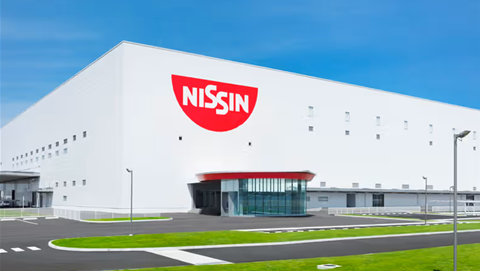Despite the murky business environment globally and ongoing trade wars - which threaten to disrupt supply chains, upend growth projections and delay spending by companies - the tech and software landscape in the Asia region this year continues to stay strong, and is even broadening with cloud adoption, AI and automation trends redefining companies and industries.
How is demand for digital infrastructure and software services shaping up, and where are companies focusing their tech spending?
To learn more, iTNews Asia speaks exclusively with Prem Pavan, Vice President & General Manager for South-East Asia and Korea at Red Hat, to find out why investments in digital capabilities remain essential in driving resilience, growth, and competitiveness, and pointers we can learn from early and successful AI projects.
iTNews Asia: How is the uncertain global business environment impacting your customers? Are they continuing to invest in tech, in transformation and AI?
Over the last few years. we've had a significant amount of demand really coming in from the market, and we've been engaging with the customers in a more strategic fashion, and that is continuing into 2025.
Irrespective of the environment, during boom time or other times, our customers want something in their infrastructure space (particularly the OS) that is reliable, stable, enterprise ready and widely used.
The conversations we’re having with our customers continue to be a lot around transformation in three areas: We talk about ‘What next?’ Either in terms of creating new revenue drivers, cost savings, or risk mitigation.
The hybrid cloud has given companies freedom and the choice of having a hybrid environment. Over the last three years, I've seen our conversations moving away from infrastructure and towards their application modernisation or development.
iTNews Asia: What are the areas that they are investing more into?
The automation space is an area that we're seeing significant amount of growth. I recently spoke to a CIO of major bank in Indonesia. They started off with using us on their infrastructure, and we’re moving to a stage where they are using our solutions to manage some of their banking needs in real time using mobile apps.
Now they're looking at the next step of automation, which is ‘What's the best way to transition towards AI?’ They've identified use cases. They've identified areas where they would like build their AI strategy and they want to know how they can better leverage existing investments.
iTNews Asia: I see many organisations moving to the cloud and going hybrid, with varying objectives. This could be to improve customer service, increase productivity or streamline business processes. It could be they are fixing problems (like overcoming complexity) and migrating from legacy. When talking to your customers on their digital transformation initiatives, what has been their most common and greatest needs?
The driving motivation is to continue to be agile, to be able to respond with agility, and in a cost-effective way. How that translates (on the ground) is nuanced in terms of how and what kind of choices they're able to make, and how quickly they can turn around and modernise their applications.
You spoke about uncertainty. COVID was just a few years ago. We went through a period of uncertainty at a massive scale. I see crisis as an opportunity.

During COVID, there was a huge transformation of businesses, from education - with physical classes going online - to medical teleconsultations and the way we order food. Today you go to an empty restaurant, it doesn't mean it's doing badly, because you may have a lot of deliveries going out. This business-related transformation came from the need to respond to customer needs and the environment during that period of time. COVID was when digital transformation happened fastest, and at its best.
- Prem Pavan, Vice President & General Manager for South-East Asia and Korea at Red Hat
iTNews Asia: What do you see as the underpinning qualities of successful digital transformation?
Successful transformation requires a certain change irrespective of the industry. There are several underpinning qualities. The first is it requires a tremendous amount of leadership that can set the right goal posts and guidance. Closely related, leadership is then about how well you go to market and what kind of now products and services you want to deliver, and how you are able to change, fine tune and tweak these services and products along the way.
Then you go to the next step of deciding how to do this right? How do I bring that architecture together? What's the kind of development platforms that I want to look at? How do I look at operations?
Once you’ve got all the pieces right, the ability to drive change and transformation becomes easier. You will get clarity if the pieces are right.
Once you've got that clarity, look at how agile you are willing to be? With agility comes exposure, for example, business exposure or cyber exposure. Resilience then becomes really important. The combination (of agility and resilience) will help your organisation expand and scale.
iTNews Asia: Anecdotally, more than 70 percent of digital transformation initiatives in our region typically don't meet the objectives. You spoke about leadership. How much or how often is leadership (or lack of) the biggest barrier to transformation?
I would personally put leadership at a very high level. Leadership tends to drive culture within the organisation. Leadership sets the tone for intent and mindset. The moment you bring these factors together, then it's about looking at the obstacles, and how do you find solutions to overcome them, versus just focusing on the problems.
iTNews Asia: You cover a broad region from Korea to Southeast Asia that includes customers in developed and developing markets. Is there a common thread when you talk about digital transformation, when in some of the more rural areas in emerging markets, connectivity still remains a challenge?
The conversations are different, depending on the market. But often it’s about data, is the whole data layer ready? Is the data clean, solid, right and stable? It doesn't matter how sophisticated an engine you plug into if that data itself is not very clean, and if it is not in shape, then the output will get impacted.
iTNews Asia: Is data then their biggest challenge when they undergo digital transformation?
It depends on what the objectives are in the digital transformation, What are the business outcomes you're trying to achieve? What's their problems? We may not even even talk about technology in the initial parts of the discussions. We try to map out the different kind of transformation options that are available, and narrow it down to how Red Hat can help.
What’s interesting now is that offerings that are typically associated with very matured markets, we are increasingly seeing emerging markets wanting to be a part of those engagements. Our customers (in the emerging markets) say they want to do it, but in the right way.
Many want to move more of their workloads onto the cloud. It could be a technical issue but it's still very business in nature. They are asking: What kind of workload should I retain in my traditional infrastructure? What kind of workload can be moved over to the cloud? What are the best practices over here? How do I get started?
Some of our customers in these markets have already identified use cases for their AI. Many want to understand – how can they save costs when doing so?
iTNews Asia: We've seen a lot of experimentation and production trials in AI over the past few years. Are we now moving to a point where companies are more confident of deploying AI in a real-world environment? How ready are they now, and how is Red Hat helping them?
There's currently a lot of noise around AI and the playing field is still in its early stages.
At Red Hat, we want to make sure that our voice has a relevance and a credibility in the AI space. We see relevance as democratising AI, and we look at it from a few perspectives that centre around wanting to simplify the capabilities and the skill sets that you need for AI.
Firstly, we can do this by lowering the barriers of skills. Right now, everybody thinks of AI as needing data scientists. But we want to simplify the capabilities and the skill sets that you need. We want to make it more and more open. We want to bring in a community involved in the whole space of AI, and lower the barriers in terms of skills. As an example, the first smartphone came into the industry in 1992, but it was only around 2007 when they became easy to use that you saw widespread adoption.
The second part of it is lowering the cost and the infrastructure barriers. We are not only looking at cost only from an infrastructure perspective but also from a perspective of energy consumption. Do you really need the kind of infrastructure that is claimed when you start off on an AI project? Can't a regular server be sufficient to get started on a project. If you want to look at it from a training perspective, can your laptop be enough as a starting point? We're questioning the context of cost and how that can be reduced, and how we can lower the barriers.
Thirdly, instead of large language models (LLMs), can we look the possibility of smaller LLMs, which is more contextual to your business and makes more sense? Do you really need those large-scale models for the AI piece that your business is managing?
iTNews Asia: What are some early success examples of AI use by your customers, and what can we learn from them?
We found that where customers are very passionate about (and found success) is when they look at the low hanging fruits. These may be boring backend processes where they are able to quickly monetise them, get quick savings, or improve productivity. Sometimes it’s a use case where they see risk mitigation benefits.
We are seeing a lot of early successes in the emerging markets, with customers looking at use case and planning their AI from an end-to-end perspective. They're bringing their teams to collaborate very early on, from data scientists to developers to operations people. They're bringing teams together to be able to look at AI from plan to production. They're also fiercely driving agility and bringing some of those things onto the road. They're also identifying cases where they don't have too much regulatory or compliance related hassles. For example, it could be for a bank, looking at address maintenance capability, changing of an address, et cetera.
iTNews Asia: Do you think that the benefits of AI still need to be properly discerned by industries and businesses, because it's so complex? What may work for one may not work for another?
Everyone now has AI initiatives and they are at different levels of maturity. What I've noticed in this cycle – from an AI perspective – and not seen with other cycles, is the urgency. Everybody understands the urgency of change that is happening. They understand that: ‘If I don't make these changes quick enough, I'm going to miss that opportunity.”
Many of them need guidance or partnerships with the industry to be able to navigate through that complexity that you're referring to.










